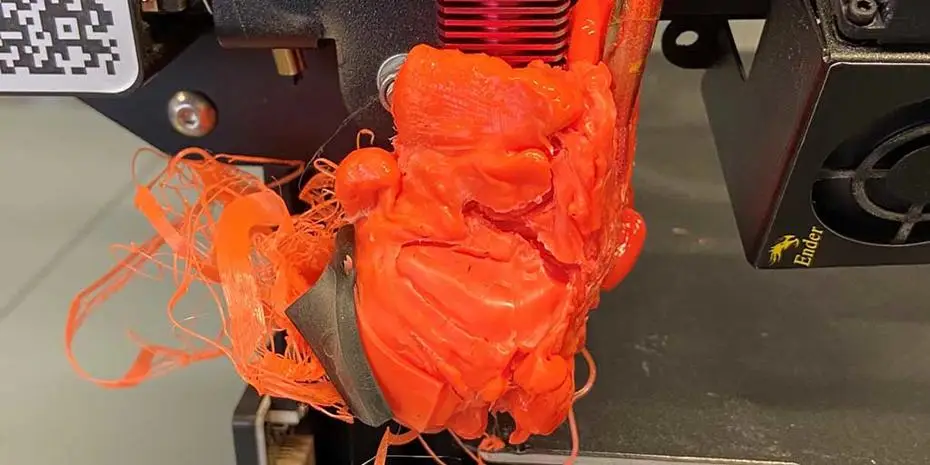3D printing: common problems & how to resolve them
Posted: February 27 2022

Made In Brunel, Design
Made In Brunel Workshop Liaison & Digital Fabrication Technician, Sarah Brashaw, takes you through common problems and how to resolve them.
Knowledge of 3D printing is quickly becoming an essential skill for all designers entering the ever-growing digital world. The technology allows for the unique opportunity to experiment with new additive manufacturing techniques and to develop a much larger knowledge of materials and their respective properties. One of the most common forms of 3D printing is FDM printing, which stands for “Fused Deposition Modelling”, and is the process whereby filament is extruded through a hotend and deposited onto a bed. 3D printing, especially FDM printing, provides the capability for rapid prototyping of complex forms. It comes with a rather steep learning curve - but don’t let this deter you!
The following is just an outline of common problems faced when FDM printing and how to overcome them and prevent these problems from occurring with future prints.
Prints coming off the bed
This is quite a common one for those who are new to FDM printing, this occurs when the surface area of the part which is in contact with the bed is insufficient, and so the part is likely to be pulled off the bed during the printing process.
To prevent this: ensure there is sufficient surface area of the part touching the bed. If the part is particularly small or the surface area in contact with the bed is rather small, use a “Raft”, which can be added in the slicing software, and will provide the part with much better adhesion to the bed and will prevent your parts from being pulled off the bed.
Insufficient filament for the print
This is quite a simple problem but happens more often than you think! We all get to a stage where we hope there is enough filament left on the spool to complete the part but inevitably there is not.
To prevent this: ensure that there is enough filament on the spool to finish printing your part. You can check this by looking at the material estimates in your slicing software, and then checking the amount of filament left on the spool. Most spools have a volume indicator on the side of them, showing approximately how much filament remains on the spool. Always check this before starting your print.
Stringing between multiple parts
This occurs for a couple of reasons; from retraction settings to the temperature of the hotend being too high.
To prevent this: enable retraction settings; this means that the filament will be slightly retracted in the hotend while the print head moves around the bed, meaning that no filament will leak out of the nozzle as the print head is moving between parts and will ultimately prevent the stringing effect. Also, ensure that you have the temperature settings on your printer set to the appropriate temperature for your filament type; if the temperature is too high, the filament will melt too readily and will leak out of the nozzle. Finally, adjust the print speed, if the print speed is too slow, as the print head moves between parts, filament can leak out of the nozzle and cause stringing.
Uneven layers in tall parts
This is more likely to occur in parts that are very tall and narrow. As the print is building upwards, the part shifts readily as the nozzle moves over the part and deposits the filament, which creates an uneven print surface for the next layer to be built on and so on.
To prevent this: print long and narrow parts laying flat on the bed, this will ensure that the layers print evenly and will ensure that the part prints as desired.
Major disaster! Blocked nozzle

When this happens, it can be very intimidating… What has happened is that a print has been pulled off the bed, due to poor bed adhesion, and stuck to the nozzle thus blocking the nozzle and preventing any filament from extruding out of the nozzle. The print will continue regardless if the nozzle is blocked or not and so the printer will continue to extrude filament, pushing it out wherever it can and so the extruded filament will build up around the nozzle and the hotend until the print finishes, the printer runs out of filament or something breaks.
To prevent this: ensure that the parts have good bed adhesion, this will prevent the parts from being pulled off the bed and sticking to the nozzle. Also ensure that the nozzle is clear before printing, this can be achieved by using a thin needle and clearing the nozzle sufficiently before printing.
I hope this helps, don’t be scared of things going wrong, this is all part of the process! Have fun and happy printing!
***
This blog was originally published by Made In Brunel. Read the original blog post here.